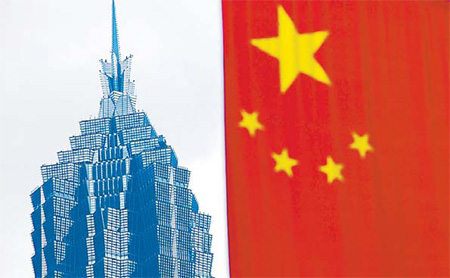Top Biz News
Fitch reaffirms China rating
(China Daily)
Updated: 2010-01-15 08:08
 |
Large Medium Small |
|
The ratings agency said China's estimated 2009 GDP growth of 8.4 percent is impressive against the backdrop of global recession.[China Daily] |
Fitch Ratings yesterday affirmed its sovereign credit ratings for China with a stable outlook citing the country's exceptional external financial position, its recent macroeconomic performance and low levels of central government debt.
The ratings agency rates the country's long-term foreign currency and local currency Issuer Default Ratings (IDRs) at 'A+' and 'AA-' respectively. Fitch said in its view the security or carrier has stable financial backing and ample cash reserves, with low risk of default for investors.
"Even with global recession in 2009, we estimated that China, which is among the world's largest exporters, ran a current account surplus of 5.5 percent of GDP, allowing for a $366 billion addition to official foreign exchange reserves," Fitch said.
The ratings agency said China's estimated 2009 GDP growth of 8.4 percent is impressive against the backdrop of global recession. However, Fitch warned the current economic conditions in China exacerbate a number of economic imbalances and risks surrounding the banking system.
The ratings agency said China's end-2009 net external credit position amounted to $2.5 trillion or 51 percent of GDP. China has limited short-term external debt repayment and liquidity risks, it said.
With government debt at only 24 percent of GDP at end-2009, China's fiscal position compares favorably with its rating peer group. The $585 billion economic stimulus plan announced in late 2008 contributed to an increase in the fiscal deficit from 0.4 percent of GDP in 2008 to an estimated 2.9 percent of GDP in 2009.
Fitch estimated the investment/GDP ratio reached 47 percent in 2009 - an all-time high - and annual credit growth was 30 percent, which is very high for a country with banking system assets well in excess of 100 percent of GDP.
The ratings agency said it believes the surges in both investment spending and credit growth are unsustainable. If unaddressed, this could lead to serious financial distress in the medium-term with sovereign rating implications.
The agency forecast a GDP growth of 9.3 percent for China in 2010, but cautioned that similar growth rates could be difficult to achieve in the medium-term without either a resumption of strong export growth or a meaningful increase in domestic consumption.
China's banking system is a large contingent sovereign liability, and Fitch is concerned about an eventual deterioration in banks' asset quality amid the loan growth acceleration in 2009 and the growing popularity of unreported loan transactions, such as those related to outright sales of loans and re-packaging of loans into wealth management products.
High investment spending, particularly in the real estate sector, also carries the risk of asset price misalignments, it said.
|
||||
Moreover, local governments rely heavily on sales of land and land rights, meaning their fiscal positions would be directly affected by a property market correction.
Meanwhile on Tuesday, Standard & Poor's reaffirmed its 'A+' long-term credit rating on China with a stable outlook, citing the country's vast external assets, strong growth and limited debt load.
On the whole, the ratings agency gave China a clean bill of health, saying that its net external asset position would probably exceed 120 percent of current account receipts this year.













